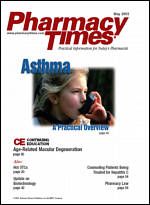Publication
Article
Pharmacy Times
Warning! Repackaged Substances May Easily Be Confused
Author(s):
The Problem The Institute for Safe Medication Practices (ISMP) received a report that a pharmacist reconstituted Amoxil (amoxicillin) suspension, 250 mg/5 mL, with an alcohol solution instead of distilled water. At the time of the error, the pharmacy stored plastic bottles containing 50% alcohol and water solution (used for dermatologic preparations) on a counter beside the distilled water bottle used for reconstituting antibiotic suspensions.A few years ago, similar errors occurred in 2 other pharmacies. Antibiotic solutions were inadvertently reconstituted with a 10% formalin solution (3% formaldehyde and 15% methanol). In both cases, the pharmacy also stored gallon jugs of distilled water. The empty distilled water jugs were then used as containers for a 10% formalin solution that the pharmacy prepared specially for surgical centers in the area. The empty jugs labeled "distilled water" were accidentally placed with the empty jugs labeled "formalin" that were awaiting refill for the surgical centers. After incorrectly filling all the jugs with formalin, employees stored them for transport. When jugs labeled "distilled water" were delivered with the formalin jugs, a surgical center employee returned them to the pharmacy, believing that the distilled water had been sent in error. Because the jugs were labeled "distilled water," the pharmacy staff stocked them along with the remaining distilled water jugs. Later, in each pharmacy these mislabeled jugs were accidentally used to refill empty distilled water reservoirs, which were attached to a burette chamber used to measure antibiotic diluents. In view of the fact that the burettes empty at eye level, the staff did not smell the formalin as it mixed with the powdered antibiotic suspensions. The errors went undetected until parents called to report the suspensions? strange smell and their children?s complaints about the taste. Together, more than 35 children took the tainted antibiotics. Several required hospitalization for vomiting, but none suffered permanent disabilities.Could something similar happen at another pharmacy site, perhaps with a different nondrug item? Unfortunately, it has happened all too often, in both health care and other settings. During onsite consultations where ISMP employees analyze medication systems for safety, they have often noticed soaps, topical substances, tissue fixatives, detergents, and even poisonous substances stored in bottles that resemble drug containers. Who can say for sure that staff members would not confuse the contents of these containers with an internal or external therapeutic product?
Safe Practice Recommendations
Here are some strategies pharmacists and health care professionals can implement to avoid errors with repackaged products:
- Develop a policy that forbids the practice of repackaging products in empty drug or solution containers. Pharmacists can even go to the extent of poking a hole in empty plastic containers to prevent their reuse with another fluid.
- Perform a risk assessment to determine whether any chemicals could be confused with something else due to the container?s color, size, or shape, the product?s name or packaging, or the solution?s color or clarity, and take the necessary steps to reduce the risk of an error.
- Examine the current supply of chemicals, and discard any that have not been used in years. Do not store any remaining chemicals near other drugs or diluents. Make sure that labels clearly indicate the contents. Place bold warning labels on any nondrug products.
- Do not supply surgical centers with chemicals that can be obtained more safely through health-related laboratory supply houses.
- Allot time during staff meetings to review appropriate patient safety issues with nonclinicians (technicians, support staff, etc) in the event that they may be involved in practices that lead to medication errors. For example, at an upcoming staff meeting present the antibiotic suspension case described above. Include all personnel (clinical and nonclinical, pharmacy and non-pharmacy). Explain why it is dangerous to repackage nondrug substances in empty drug, solution, or irrigation solution containers, or to add nondrug substances to these containers.







